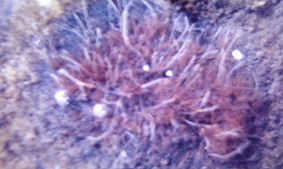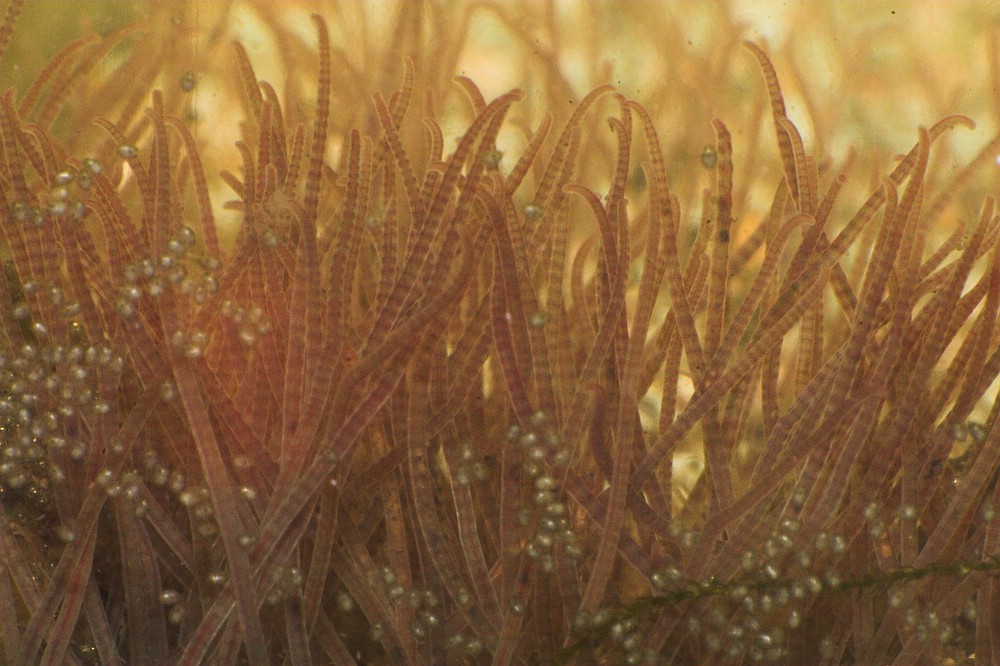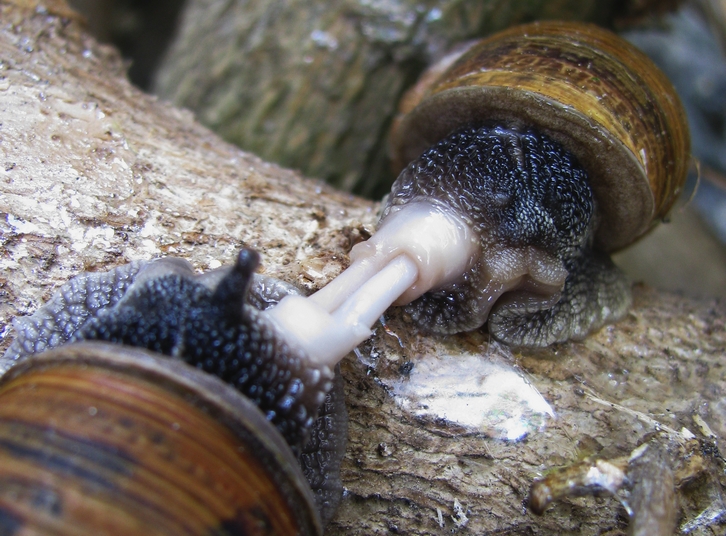|
Tubificid
The Naididae (including the former family Tubificidae) are a family of clitellate oligochaete worms like the sludge worm, ''Tubifex tubifex''. They are key components of the benthic communities of many freshwater and marine ecosystems. In freshwater aquaria they may be referred to as detritus worms. Description These worms can vary in size, from centimeters to millimeters, depending on the subfamily. They are all hermaphroditic and lack a larval stage. Taxonomy Analysis of 18S rDNA sequences revealed that the tradition family Tubificidae is not monophyletic, with the traditionally circumscribed Naididae nested within tubidicid taxa. To avoid paraphyly the naidid and tubificid taxa were included in a combined family, which took the name Naididae because it has priority under ''International Code of Zoological Nomenclature'' rules as the senior synonym of Tubificidae. A proposal to the International Commission on Zoological Nomenclature to suppress Naididae, because the "tubifici ... [...More Info...] [...Related Items...] OR: [Wikipedia] [Google] [Baidu] |
Tubifex Tubifex
''Tubifex tubifex,'' also called the sludge worm, "Boogie Worm", or sewage worm, is a species of tubificid segmented worm which inhabits the sediments of lakes and rivers on several continents. '' Tubifex'' probably includes several species, but distinguishing between them is difficult because the reproductive organs, commonly used in species identification, are resorbed after mating, and because the external characteristics of the worm vary with changes in salinity. These worms ingest sediments, selectively digest bacteria, and absorb molecules through their body walls. Micro-plastic ingestion by ''Tubifex'' worms acts as a significant risk for trophic transfer and biomagnification of microplastics up the aquatic food chain. The worms can survive with little oxygen by waving hemoglobin-rich tail ends to exploit all available oxygen, and can exchange carbon dioxide and oxygen through their thin skins, in a manner similar to frogs. They can also survive in areas heavily pollut ... [...More Info...] [...Related Items...] OR: [Wikipedia] [Google] [Baidu] |
Naididae
The Naididae (including the former family Tubificidae) are a family of clitellate oligochaete worms like the sludge worm, ''Tubifex tubifex''. They are key components of the benthic communities of many freshwater and marine ecosystems. In freshwater aquaria they may be referred to as detritus worms. Description These worms can vary in size, from centimeters to millimeters, depending on the subfamily. They are all hermaphroditic and lack a larval stage. Taxonomy Analysis of 18S rDNA sequences revealed that the tradition family Tubificidae is not monophyletic, with the traditionally circumscribed Naididae nested within tubidicid taxa. To avoid paraphyly the naidid and tubificid taxa were included in a combined family, which took the name Naididae because it has priority under ''International Code of Zoological Nomenclature'' rules as the senior synonym of Tubificidae. A proposal to the International Commission on Zoological Nomenclature to suppress Naididae, because the "tubifi ... [...More Info...] [...Related Items...] OR: [Wikipedia] [Google] [Baidu] |
Tubifex02
''Tubifex'' is a cosmopolitan genus of tubificid annelids that inhabits the sediments of lakes, rivers and occasionally sewer lines. At least 13 species of ''Tubifex'' have been identified, with the exact number not certain, as the species are not easily distinguishable from each other. Reproduction ''Tubifex'' worms are hermaphroditic: each individual has both male (testes) and female (ovaries) organs in the same animals. These minute reproductive organs are attached to the ventral side of the body wall in the celomic cavity. In mature specimens, the reproductive organs are clearly found on the ventral side of the body. Copulation and cocoon formation Although the ''Tubifex'' worms are hermaphrodites, the male and female organs become mature at different times; thus self-fertilization is avoided, and cross-fertilization is encouraged. Two mature ''Tubifex'' worms undergo copulation by joining ventral and anterior surfaces together with their anterior ends pointing opposite d ... [...More Info...] [...Related Items...] OR: [Wikipedia] [Google] [Baidu] |
Tubifex
''Tubifex'' is a cosmopolitan genus of tubificid annelids that inhabits the sediments of lakes, rivers and occasionally sewer lines. At least 13 species of ''Tubifex'' have been identified, with the exact number not certain, as the species are not easily distinguishable from each other. Reproduction ''Tubifex'' worms are hermaphroditic: each individual has both male (testes) and female (ovaries) organs in the same animals. These minute reproductive organs are attached to the ventral side of the body wall in the celomic cavity. In mature specimens, the reproductive organs are clearly found on the ventral side of the body. Copulation and cocoon formation Although the ''Tubifex'' worms are hermaphrodites, the male and female organs become mature at different times; thus self-fertilization is avoided, and cross-fertilization is encouraged. Two mature ''Tubifex'' worms undergo copulation by joining ventral and anterior surfaces together with their anterior ends pointing opposit ... [...More Info...] [...Related Items...] OR: [Wikipedia] [Google] [Baidu] |
Clitellate
The Clitellata are a class of annelid worms, characterized by having a clitellum - the 'collar' that forms a reproductive cocoon during part of their life cycles. The clitellates comprise around 8,000 species. Unlike the class of Polychaeta, they do not have parapodia and their heads are less developed. Characteristics Clitellate annelids are segmented worms characterised by the clitellum or girdle which is located near the head end of mature individuals. The mouth is on the ventral surface and is overhung by the prostomium (proboscis). The brain is not located in the head but in one of the body segments. The clitellum is formed by a modification of several segments, and either includes the female gonopores or is located just behind them. During copulation, this glandular tissue secretes mucus that keeps the paired individuals together while they exchange sperm. Afterwards it secretes material that forms a cocoon that encircles the animal's body and encloses the eggs and sperm. ... [...More Info...] [...Related Items...] OR: [Wikipedia] [Google] [Baidu] |
Oligochaete
Oligochaeta () is a subclass of animals in the phylum Annelida, which is made up of many types of aquatic and terrestrial worms, including all of the various earthworms. Specifically, oligochaetes comprise the terrestrial megadrile earthworms (some of which are semiaquatic or fully aquatic), and freshwater or semiterrestrial microdrile forms, including the tubificids, pot worms and ice worms ( Enchytraeidae), blackworms ( Lumbriculidae) and several interstitial marine worms. With around 10,000 known species, the Oligochaeta make up about half of the phylum Annelida. These worms usually have few setae (chaetae) or "bristles" on their outer body surfaces, and lack parapodia, unlike polychaeta. Diversity Oligochaetes are well-segmented worms and most have a spacious body cavity (coelom) used as a hydroskeleton. They range in length from less than up to in the 'giant' species such as the giant Gippsland earthworm (''Megascolides australis'') and the Mekong worm (''Am ... [...More Info...] [...Related Items...] OR: [Wikipedia] [Google] [Baidu] |
Limnodriloidinae
Limnodriloidinae is a subfamily of clitellate oligochaete worm Worms are many different distantly related bilateral animals that typically have a long cylindrical tube-like body, no limbs, and no eyes (though not always). Worms vary in size from microscopic to over in length for marine polychaete wor ...s. Species The following genera are currently recognized within Limnodriloidinae: * '' Doliodrilus'' Erséus, 1984 * '' Limnodriloides'' Pierantoni, 1903 * '' Parakaketio'' Erséus, 1982 * '' Rossidrilus'' Erséus & Rota, 1996 * '' Smithsonidrilus'' Brinkhurst, 1966 * '' Tectidrilus'' Erséus, 1982 * '' Thalassodrilides'' Brinkhurst & Baker, 1979 References Further reading * Diaz, Robert J., and Christer Erseus. "Habitat preferences and species associations of shallow-water marine Tubificidae (Oligochaeta) from the barrier reef ecosystems off Belize, Central America." Aquatic Oligochaete Biology V. Springer Netherlands, 1994. 93-105. * Erséus, Christer. "Mang ... [...More Info...] [...Related Items...] OR: [Wikipedia] [Google] [Baidu] |
Hermaphroditic
In reproductive biology, a hermaphrodite () is an organism that has both kinds of reproductive organs and can produce both gametes associated with male and female sexes. Many taxonomic groups of animals (mostly invertebrates) do not have separate sexes. In these groups, hermaphroditism is a normal condition, enabling a form of sexual reproduction in which either partner can act as the female or male. For example, the great majority of tunicates, pulmonate molluscs, opisthobranch, earthworms, and slugs are hermaphrodites. Hermaphroditism is also found in some fish species and to a lesser degree in other vertebrates. Most plants are also hermaphrodites. Animal species having different sexes, male and female, are called gonochoric, which is the opposite of hermaphrodite. There are also species where hermaphrodites exist alongside males (called androdioecy) or alongside females (called gynodioecy), or all three exist in the same species (called trioecy); these three systems ... [...More Info...] [...Related Items...] OR: [Wikipedia] [Google] [Baidu] |
Muddy River (Massachusetts)
The Muddy River is a series of brooks and ponds that runs through sections of Boston's Emerald Necklace, including along the south boundary of Brookline, Massachusetts (a town that went by the name of Muddy River Hamlet before it was incorporated in 1705). The river, which is narrower than most waterways designated as rivers in the United States, is a protected public recreation area surrounded by parks and hiking trails, managed by the Massachusetts Department of Conservation and Recreation. The river flows from Jamaica Pond through Olmsted Park's Wards Pond, Willow Pond, and Leverett Pond. It then flows through a conduit under Route 9 and into a narrow park called the Riverway, from which it flows through three culverts: the Riverway Culvert, the Brookline Avenue Culvert, and the Avenue Louis Pasteur Culvert. The Muddy River continues from the Fens toward its connection with the Charles River via the Charlesgate area, running through a stone-paved channel surrounded by a narr ... [...More Info...] [...Related Items...] OR: [Wikipedia] [Google] [Baidu] |
Aquarium
An aquarium (plural: ''aquariums'' or ''aquaria'') is a vivarium of any size having at least one transparent side in which aquatic plants or animals are kept and displayed. Fishkeepers use aquaria to keep fish, invertebrates, amphibians, aquatic reptiles, such as turtles, and aquatic plants. The term ''aquarium'', coined by English naturalist Philip Henry Gosse, combines the Latin root , meaning 'water', with the suffix , meaning 'a place for relating to'. The aquarium principle was fully developed in 1850 by the chemist Robert Warington, who explained that plants added to water in a container would give off enough oxygen to support animals, so long as the numbers of animals did not grow too large. The aquarium craze was launched in early Victorian England by Gosse, who created and stocked the first public aquarium at the London Zoo in 1853, and published the first manual, ''The Aquarium: An Unveiling of the Wonders of the Deep Sea'' in 1854.Katherine C. Grier (2008) ... [...More Info...] [...Related Items...] OR: [Wikipedia] [Google] [Baidu] |
Phylogenetic
In biology, phylogenetics (; from Greek φυλή/ φῦλον [] "tribe, clan, race", and wikt:γενετικός, γενετικός [] "origin, source, birth") is the study of the evolutionary history and relationships among or within groups of organisms. These relationships are determined by Computational phylogenetics, phylogenetic inference methods that focus on observed heritable traits, such as DNA sequences, protein amino acid sequences, or morphology. The result of such an analysis is a phylogenetic tree—a diagram containing a hypothesis of relationships that reflects the evolutionary history of a group of organisms. The tips of a phylogenetic tree can be living taxa or fossils, and represent the "end" or the present time in an evolutionary lineage. A phylogenetic diagram can be rooted or unrooted. A rooted tree diagram indicates the hypothetical common ancestor of the tree. An unrooted tree diagram (a network) makes no assumption about the ancestral line, and does ... [...More Info...] [...Related Items...] OR: [Wikipedia] [Google] [Baidu] |
Zootaxa
''Zootaxa'' is a peer-reviewed scientific mega journal for animal taxonomists. It is published by Magnolia Press ''Magnolia'' is a large genus of about 210 to 340The number of species in the genus ''Magnolia'' depends on the taxonomic view that one takes up. Recent molecular and morphological research shows that former genera ''Talauma'', ''Dugandiodendr ... (Auckland, New Zealand). The journal was established by Zhi-Qiang Zhang in 2001 and new issues are published multiple times a week. From 2001 to 2020, more than 60,000 new species have been described in the journal accounting for around 25% of all new Taxon, taxa indexed in The Zoological Record in the last few years. Print and online versions are available. Temporary suspension from JCR The journal exhibited high levels of self-citation and its journal impact factor of 2019 was suspended from ''Journal Citation Reports'' in 2020, a sanction which hit 34 journals in total. Biologist Ross Mounce noted that high levels of ... [...More Info...] [...Related Items...] OR: [Wikipedia] [Google] [Baidu] |






